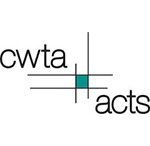Posted: Mar 20 '13
Toxic substances have two effects on the human body. Some are immediate (acute), others can show signs years later (delayed). For example, if you were exposed to a high level of H2S, the effects would be immediate; you may even die. Benzene on the other hand, you could be exposed to in high concentrations, and it would have little immediate effect, but years later you may develop cancer from the exposure. It is important to conduct atmospheric testing to control this hazard.
Toxic substances can enter the body in four ways:
1) Ingestion
2) Inhalation
3) Absorption
4) Injection
H2S enters our body through inhalation of the gas. Our concern of exposure from the other routes of entry is negligible.
Some of the terms we need to know to understand safe working limits for H2S are as follows:
Occupational exposure limits, these are the legal maximum exposure values set by the provincial or state jurisdiction you are working in.
8 hour time weighted average, this is the value that you are allowed to be exposed to in an 8 hour work shift. Most jurisdictions set this value at 10ppm. Typically this is the minimum alarm set point on your electronic gas monitor.
Short term exposure limit, this is the maximum amount that a worker can be exposed to in a 15 minute period of time, to a maximum of 4 periods per 8 hour shift, and separated by a 60 minute period of no exposure.
Ceiling is the maximum amount a worker is allowed to be exposed to without breathing protection. Currently many jurisdictions are setting their ceiling at 15-20ppm. However some has set their ceiling as low at 10ppm, in the case of British Columbia.
The last value we will review is the Immediately Dangerous to life and health value. The IDLH is the amount of a gas that poses an immediate danger to a person health because of either immediate health effects, delayed health effects or if it would incapacitate a worker and interfere with their ability to escape the atmosphere.
It is important to review and understand the safe working limits for your jobsite.
REQUEST INFO ON OUR COURSES



